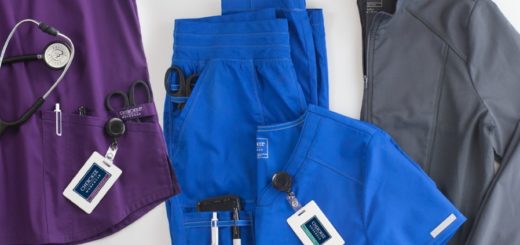Best Gadget for Fertility – The Best Fertility Gadgets
{YBA} Knowing when you are ovulating will greatly improve your chances of getting pregnant. There are a lot of low tech methods of predicting ovulation like urine strip ovulation tests, basal body temperature charting, and keeping a look out for your own body’s signs of ovulation.
While these low tech methods may be helpful, they can be confusing and tedious to keep up with. There are now numerous products on the market to help couples conceive. We have come up with a list of the best high tech gadgets to help you get pregnant.
Fertility Charting Ovulation and Prediction
Clear Blue Easy Fertility Monitor
The Clear Blue Easy Fertility Monitor is a computerized device that stores your personal information and tells you each day how fertile you are, taking the guess work out of trying to conceive. A study published in the February 2007 issue of the American Society for Reproductive Medicine’s publication Fertility & Sterility found that the Clear Blue Easy Fertility Monitor helped couples conceive faster. The study found that 23% of the couples that used the Clear Blue Easy Fertility Monitor became pregnant during the first two cycles, whereas only 14% of couples conceived without using the monitor.
Unlike urine ovulation test strips that only detect the hormone LH, a hormone that surges just before ovulation, the Clear Blue Easy fertility monitor tests for LH (luteinizing hormone) and estrogen. Both hormones are involved in ovulation. High levels of estrogen signal the body to release LH, which in turn, triggers ovulation.
By detecting both hormones, the Clear Blue Easy Fertility Monitor can predict a woman’s fertile days sooner than ovulation test strips. Since the egg only survives for a short time, about 24 hours, and sperm can live for as long as five days, a woman can get pregnant during the five days preceding ovulation. Identifying these fertile days will improve your chances of conception.
The Clear Blue Easy Fertility Monitor can identify up to six fertile days during a woman’s cycle. Using the monitor is easy. You will need to purchase urine test sticks to use with the monitor and insert them into the test stick slot on the days the monitor indicates.
The display screen will tell you when you are most fertile, ranging from high fertility to peak fertility. You should plan to have intercourse during both your high fertility days and peak fertility days, ideally at least once during each.
OvaCue Fertility Monitor
The Ovacue Fertility Monitor also stores all of your personal information and identifies your fertile days. To use the OvaCue fertility monitor you just place a small sensor on your tongue for five seconds. It’s very easy to use. The monitor stores the information and tells you how fertile you are by displaying 1-7 bars – one bar indicating lowest fertility and 7 bars indicating highest fertility. You should plan to have intercourse on the day OvaCue determines to be your most fertile day.
What makes the OvaCue Fertility Monitor different than other fertility monitors is that it doesn’t involve urine testing, so you don’t have to buy extra test sticks to use this monitor. The OvaCue Fertility Monitor works by detecting electrolyte changes in your saliva. Hormonal changes that take place before ovulation affect a woman’s cervical mucous by making it more slippery and stretchy to transport sperm.
But, they don’t only change her cervical mucous, they also change her saliva. The electrolytes in saliva are affected by the woman’s changing hormone levels, primarily estrogen and LH. The OvaCue monitor, like the Clear Blue Easy Fertility Monitor, checks for changes in estrogen and LH, it just tests for it by a different mechanism.
The advantage of checking the electrolytes in saliva is that the changes in saliva are detectable sooner than changes in urine. Estrogen and LH take time to make their way from a woman’s blood stream into her urine. Because of this, it is possible that urine testing may not detect a woman’s fertile period as quickly, giving her a smaller fertile window and less time to have intercourse.
Maybe Mom Mini Ovulation Microscope
The Maybe Mom Mini Ovulation Microscope is a saliva microscope that is used to examine crystallized salts in dried saliva. Saliva changes throughout a woman’s cycle. By looking at the patterns formed from the crystallized salts, a woman can determine how close she is to ovulating. As ovulation approaches the crystals will begin to form a pattern that looks much like a fern. If you see a fern-like pattern in the microscope, it means you are ovulating.
There are several fertility saliva microscopes on the market, also called ferning microscopes. The Maybe Mom Min Ovulation Microscope is a little pricier than some of the other microscopes available, but it offers a lifetime replacement guarantee, is FDA approved, and is 98% accurate, according to the company’s website.
It is an affordable option for monitoring your fertility. And, because it doesn’t involve test sticks, it can be used again and again, without the need to purchase extra supplies.
OV Watch
The OV Watch is another high tech fertility gadget. The watch is easy to use, no need to remember to take a urine test or check your saliva. You simply where the watch while you sleep starting on the first, second, or third day of your menstrual cycle. The OV Watch tells the woman when she is fertile by counting down the days to ovulation.
The first fertile day will be displayed on the watch as “Fertile Day 1”, followed by “Fertile Day 2” until it gets to “Fertile Day 4.” The fertile days indicate the days leading up to ovulation when a woman is fertile, but not ovulating. On the day she ovulates the watch will display a notice that says “Ov Day 1”, after that it will show one additional fertile day “Less Fertile Day 1.”
Unlike the other fertility gadgets that collect urine or saliva, the OV Watch determines a woman’s fertility based on salt levels in her sweat. Researchers have found that a woman’s salt levels fluctuate throughout her fertility cycle in response to her changing hormone levels. According to the company’s website, chloride levels surge three days before there is a surge in estrogen, making the OV Watch capable of detecting ovulation sooner than estrogen or LH based fertility monitors.
Optimus Petit Sophia Fertility Monitor
The Optimus Petit Sophia Fertility Monitor is an inexpensive way to keep track of your fertility. It is basically a high-tech basal body thermometer. Ordinarily, using the basal body temperature method for fertility monitoring requires a woman to take her temperature, record it on a chart, and interpret the data on the chart.
The Optimus Petit Sophia Fertility Monitor makes fertility charting easy. It has a built in alarm, making it convenient and portable. Like the other fertility monitors, it stores your personal information and identifies fertile days. The price is right for this fertility monitor, but like most temperature methods of predicting ovulation,
It is better at indicating when ovulation has taken place than predicting it in advance. Still, if you want to improve your chances of getting pregnant and don’t want to spend a lot of money, the Optimus Petit Sophia Fertility Monitor may be the way to go.


